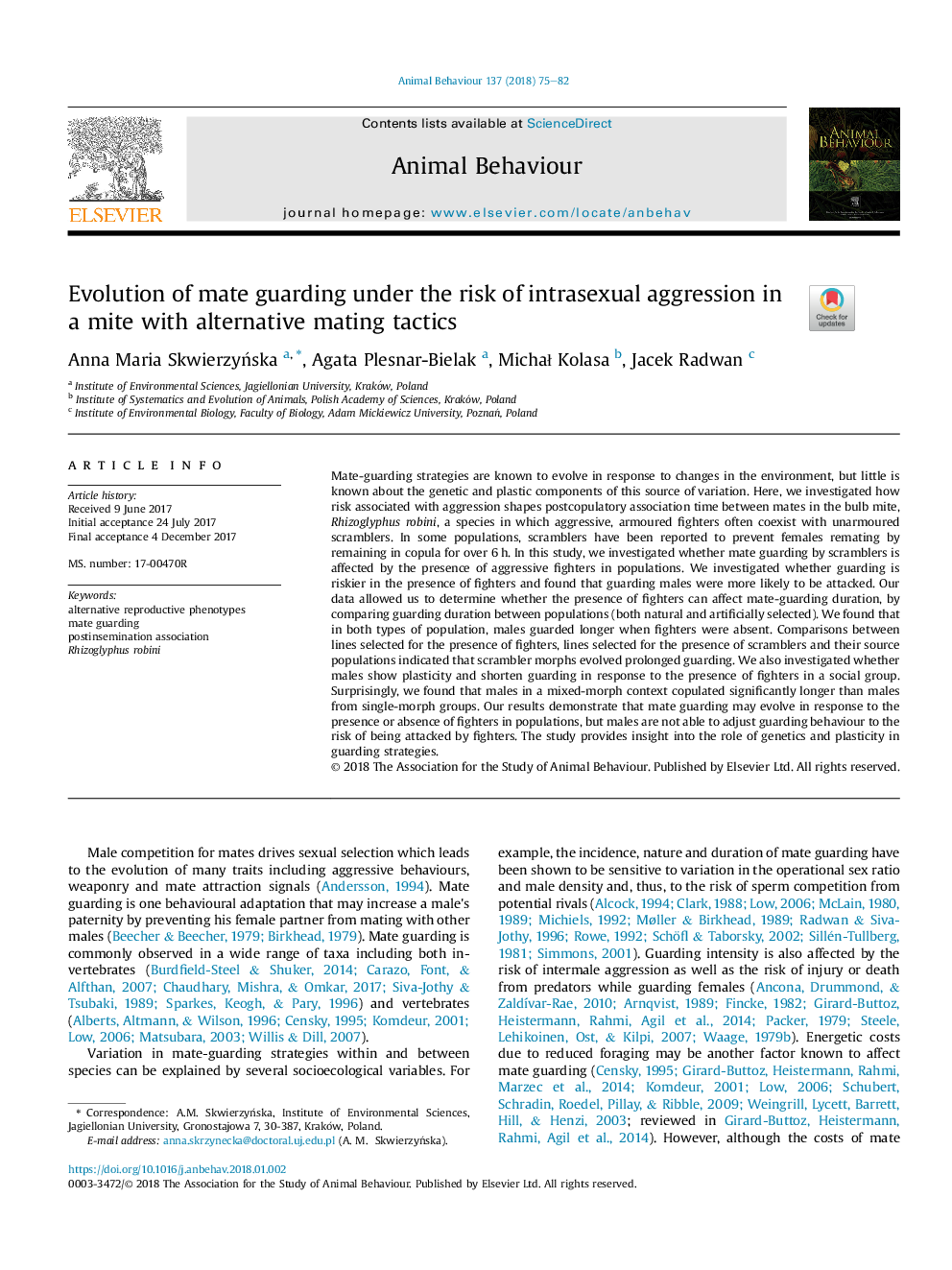ترجمه فارسی عنوان مقاله
تکامل ماموریت در معرض خطر ابتلا به تهاجم متقاطع در یک مگس با تاکتیک های جفت گیری جایگزین
عنوان انگلیسی
Evolution of mate guarding under the risk of intrasexual aggression in a mite with alternative mating tactics
| کد مقاله | سال انتشار | تعداد صفحات مقاله انگلیسی |
|---|---|---|
| 138650 | 2018 | 8 صفحه PDF |
منبع

Publisher : Elsevier - Science Direct (الزویر - ساینس دایرکت)
Journal : Animal Behaviour, Volume 137, March 2018, Pages 75-82

